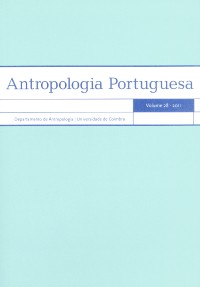Please use this identifier to cite or link to this item:
https://hdl.handle.net/10316.2/28572| DC Field | Value | Language |
|---|---|---|
| dc.contributor.author | Melo, Linda Elisabete Mendes | - |
| dc.contributor.author | Quintais, Luís | - |
| dc.date.accessioned | 2014-02-05T11:29:09Z | - |
| dc.date.accessioned | 2020-09-14T11:11:57Z | - |
| dc.date.available | 2014-02-05T11:29:09Z | - |
| dc.date.available | 2020-09-14T11:11:57Z | - |
| dc.date.issued | 2011 | - |
| dc.identifier.issn | 2182-7982 | - |
| dc.identifier.uri | https://hdl.handle.net/10316.2/28572 | - |
| dc.identifier.uri | https://hdl.handle.net/10316.2/28572 | - |
| dc.description.abstract | The work I propose to carry out is based on an anthropological study of the hyperactive child. Throughout the anthropological research I have as aim or objective on one side to contribute with an attentive look at the theme child, situate or place the ethnography in medical and psychiatric anthropology, and to understand the need of the categories emergency in the psychiatric context. On the other hand, I pretend to approach the way the hyperactive diagnosis is explained or found, how the illness is understood in the family, community and school context and how the child itself manages its role of ill or sick, the being put aside, and the control over its own body namely through the use of medication. It is in this way that it is also useful to approach the duality illness/disease, as well as the study of how the frontiers between “normal” and “pathological” are outlined. It is also relevant that we analyse not only the biological legacy but also the social legacy as to the aetiology and idea of the social representation of the illness. | eng |
| dc.description.abstract | O trabalho que me proponho realizar baseia-se num estudo antropológico sobre criança hiperactiva. Ao longo de toda a pesquisa antropológica tenho como objectivo, por um lado, contribuir com um olhar mais atento ao tema criança, situar a etnografia na Antropologia médica e psiquiátrica e compreender a emergência da categoria em análise no contexto psiquiátrico. Por outro lado, no terreno, pretendo abordar o modo como é deslindado o diagnóstico hiperactivo, como a doença é entendida em contexto familiar, comunitário, escolar e como a própria criança gere o seu papel de doente, a estigmatização e o controlo exercido no seu corpo, nomeadamente, através da medicação. Neste sentido, é também útil abordar as dicotomias illness/disease, bem como estudar o modo como se delineiam as fronteiras entre o “normal” e o “patológico”. Torna-se também relevante analisar, não só, o legado biológico mas sobretudo social quanto à etiologia e ideia de representação social da doença. | por |
| dc.language.iso | por | - |
| dc.publisher | CIAS - Centro de Investigação em Antropologia e Saúde | - |
| dc.rights | open access | - |
| dc.subject | Hiperactividade | - |
| dc.subject | criança | - |
| dc.subject | antropologia médica | - |
| dc.subject | psiquiatria | - |
| dc.subject | Hyperactivity | eng |
| dc.subject | child | eng |
| dc.subject | medical anthropology | eng |
| dc.title | Um estudo antropológico sobre a perturbação de hiperactividade com défice de atenção na criança | por |
| dc.type | article | - |
| uc.publication.collection | Antropologia Portuguesa vol. 28 | - |
| uc.publication.firstPage | 9 | - |
| uc.publication.lastPage | 32 | - |
| uc.publication.location | Coimbra | - |
| uc.publication.journalTitle | Antropologia Portuguesa | - |
| uc.publication.volume | 28 | por |
| dc.identifier.doi | 10.14195/2182-7982_28_1 | - |
| uc.publication.section | Vária | - |
| uc.publication.digCollection | IP | - |
| uc.publication.digCollection | B1 | - |
| uc.publication.orderno | 1 | - |
| uc.publication.area | Ciências Sociais | - |
| uc.publication.manifest | https://dl.uc.pt/json/iiif/10316.2/28572/213936/manifest?manifest=/json/iiif/10316.2/28572/213936/manifest | - |
| uc.publication.thumbnail | https://dl.uc.pt/retrieve/11210872 | - |
| uc.itemId | 70788 | - |
| uc.thumbnail.uri | https://dl.uc.pt/iiif-imgsrv/11210822/dl!3!11!30!80!113080849344949786281473873005052036593 | - |
| item.grantfulltext | open | - |
| item.fulltext | With Fulltext | - |
| Appears in Collections: | Antropologia Portuguesa | |
Files in This Item:
| File | Description | Size | Format | |
|---|---|---|---|---|
| ap28_artigo2.pdf | 1.45 MB | Adobe PDF |  |
Items in DSpace are protected by copyright, with all rights reserved, unless otherwise indicated.
